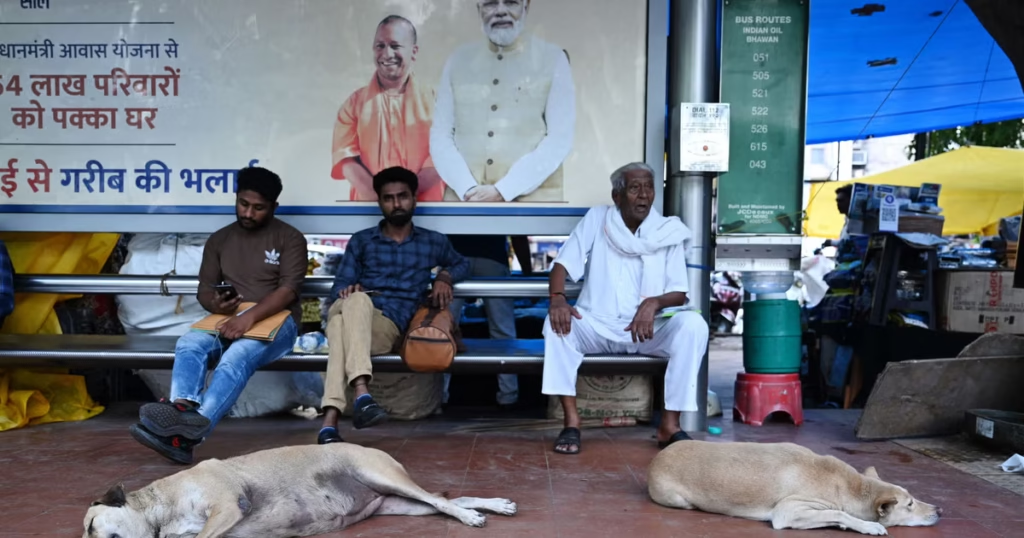
The issue of stray dogs in India has surged into the spotlight after the Supreme Court delivered a landmark verdict: all stray dogs in Delhi-NCR must be relocated to shelters within eight weeks, as a response to escalating dog bite and rabies cases Stray Dogs India.
This court order cites troubling numbers—over 430,000 dog bite cases in January 2025 alone, and India’s global burden of rabies. Delhi alone houses nearly one million stray dogs, while only about 8 million dogs nationwide reside in shelters. The court emphasized protecting children and the public, calling sterilization and vaccination insufficient on their own.
Animal Rights Under Scrutiny Stray Dogs India

The directive has drawn fierce backlash from animal welfare advocates. Critics label it “impractical,” “inhumane,” and warn of unintended consequences such as heightened aggression among dogs and disrupted ecological balance—what’s known as the “vacuum effect”. Spoiler: implementing the order might cost over ₹15,000 crore, stretching municipal resources to breaking point. Stray Dogs India
Moreover, the order seemingly conflicts with India’s Animal Birth Control (ABC) Rules, 2023, which mandate sterilization, vaccination, and returning dogs to their original communities rather than relocation.
Public & Political Reactions

High-profile figures—from celebrities to MPs—have weighed in. Social media is awash with criticism, with some calling the ruling a “death warrant” for stray dogs. Several states, including Tamil Nadu, Rajasthan, and Uttar Pradesh, are exploring similar orders.
Notably, Chief Justice B.R. Gavai has signaled openness to revisiting the issue, acknowledging conflicting Supreme Court judgments and growing public concern. Trinamool Congress MP Saket Gokhale also petitioned the CJI, calling the order both “cruel and inhuman” and urging for more consultative policymaking.
A Sustainable Alternative: Humane Strategies Stray Dogs India

Many experts insist that stray dogs India warrants solutions rooted in compassion, not compulsion. The traditional ABC approach—sterilization, vaccination, community feeding, and monitoring—when properly resourced, remains humane and effective.
Organizations like the Blue Cross of India pioneered such methods decades ago: capturing dogs, sterilizing, vaccinating, and returning them—simultaneously reducing population growth and rabies risk. Technology-enabled rescues also exist—The Voice of Stray Dogs in Bengaluru, for example, offers a mobile reporting app and birth-control clinics for free.
On the conservation front, concerns extend beyond urban centers: in Rajasthan’s Arwar Reserve, stray dogs are preying on endangered ground-nesting birds like the Lesser Florican, triggering urgent demands for controlled ABC campaigns and bans on releasing dogs into sensitive habitats.
Conclusion: Finding Common Ground Stray Dogs India
The stray dogs India debate stands at a crossroads: public safety demands action, but humane, scientifically grounded methods must take precedence. A long-term solution should integrate:
- Robust ABC implementation, supported by NGOs and municipal bodies
- Transparent monitoring and community involvement
- Wildlife-sensitive strategies for protected areas
- Judicial prudence—balancing constitutional rights, animal welfare, and public health
With careful planning and empathy, India can manage its stray dog population in ways that save lives—for both humans and dogs.

